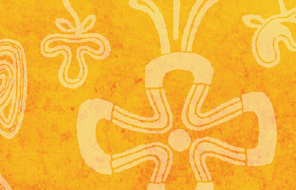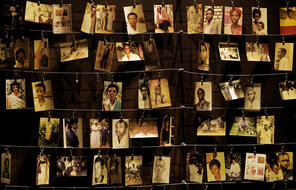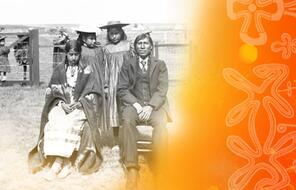The Role of the Churches
The Christian denominations supported the boarding or residential schools over the day school model (though they also ran many of the day schools on the reserves). Recognizing the urgent need to help Indigenous Peoples cope with the destruction of their way of life, J. N. Poitras, an Oblate priest, said:
Allow me to say that hunting is a thing of the past, for the Bands in [my district]. It is a fact of experience that wherever the white people have penetrated, the fur bearing animals have been overrun by lumbermen, prospectors, miners, settlers, etc., who have destroyed the hunting grounds of the Indians [who] as a rule . . . have to have recourse to other means besides hunting to support their families. It will be the case more especially for the growing generation. They will have to earn their living, as the white people, they must be prepared for it and trained from youth. That training they get in our Industrial and Boarding Schools—nowhere else.” 1
Indeed, in the same way they worked to convert colonized peoples in Africa, India, and other colonies, the European churches had also sent missionaries to Christianize, train, and educate Indigenous Peoples in what would later become Canada. Some missionaries went out of their way to help indigenous communities in need, although they did so in an effort to convert members of these communities to their own denomination of Christianity. This involved denying the value of indigenous culture, spirituality, and traditions. A directive to the staff of residential schools in Nova Scotia spelled out the Western values the schools were instructed to teach:
In the primary grades, instill the qualities of obedience, respect, order, neatness and cleanliness. Differentiate between right and wrong, cultivate truthful habits and a spirit of fair play. As the pupils become more advanced inculcate as near as possible in the order mentioned, independence, self-respect, industry, honesty, thrift, self-maintenance, [and] citizenship. . . . Discuss charity, pauperism, Indian and white life, the evils of Indian isolation, enfranchisement. Explain the relationship of the sexes to labour, home and public duties, and labour as the law of existence. 2
For all involved, there was no distinction between the civilizing and Christianizing mission; they were one and the same. As early as 1852, Rev. Samuel Rose, the principal of Mt. Elgin Indian Residential School at the time, explained the following:
[T]he education of these [Aboriginal] youths has been regarded by me as the work of no ordinary character; an education solemnly important in his connection to the future, with the unborn periods of the time. . . . These youths are to form the class whose histories is to be a most important epoch in the history of the nations to which they belong. . . . This class is to spring a generation, who will either perpetuate the manners and customs of their ancestors, or being intellectually, morally and religiously elevated, take their stand among the improved, intelligent nations of the earth, their part in the great drama of the world’s doing; or of want of necessary qualifications, to take their place and perform their part, be despised and pushed off the stage of action and ceased to be! 3
Similarly, years later, a memorandum of the Convention of Catholic Principals in 1924 put it this way:
All true civilization must be based on moral law, which christian religion alone can give. Pagan superstition could not suffice … to make the Indians practice the virtues of our civilization and avoid its attendant vices. Several people have desired us to countenance the dances of the Indians and to observe their festivals; but their habits, being the result of free and easy mode of life, cannot conform to the intense struggle for life which our social conditions require. 4
The Roman Catholic and Anglican Churches operated the majority of the residential schools even before the Indian Act made such schools the official government policy. These churches ran the two largest religious organizations behind the residential schools: the Roman Catholic Oblates Order of Mary Immaculate and the Church Missionary Society of the Anglican Church (the Church of England). Overall, the Roman Catholic diocese managed as many as 60% of the schools, and the Anglican Church managed 25%. Most of the rest were led by the United Church of Canada (created after 1925 as a merger of several Protestant denominations, including the Presbyterians, Methodists, and smaller denominations). 5
For better or worse, the contribution of the churches was highly significant. In some cases, residential schools grew out of orphanages and day schools set up by these orders or by women who joined the mission. In addition, several female religious orders supplied teachers, nuns, nurses, and administrators as the system developed. 6 But after the first decades of the twentieth century, in their zeal to Christianize, the churches competed over students and kept the residential schools system running long after the government began to realize that it was not achieving its goals. 7 Prejudices against indigenous ways of life and a sense of cultural superiority eventually set the operators of these schools against their students and created the backdrop for the traumatic experience of the humiliation, neglect, and dismissal of indigenous cultures. 8
The religious mission, however benevolently intended by the churches, was only part of the their vision. A 2012 report from the Truth and Reconciliation Commission explains the complicated role of the churches as follows:
To both Protestant and Catholic missionaries, Aboriginal spiritual beliefs were little more than superstition and witchcraft. In British Columbia, William Duncan of the Church Missionary Society reported: “I cannot describe the conditions of this people better than by saying that it is just what might be expected in savage heathen life.” Missionaries led the campaign to outlaw Aboriginal sacred ceremonies such as the Potlatch on the west coast and the Sun Dance on the Prairies. In British Columbia in 1884, for example, Roman Catholic missionaries argued for banning the Potlatch, saying that participation in the ceremony left many families so impoverished they had to withdraw their children from school to accompany them in the winter to help them search for food. While, on one front, missionaries were engaged in a war on Aboriginal culture, on another, they often served as advocates for protecting and advancing Aboriginal interests in their dealings with government and settlers. Many learned Aboriginal languages, and conducted religious ceremonies at the schools in those languages. These efforts were not unrewarded: the 1899 census identified 70,000 of 100,000 Indian people in Canada as Christians. 9
We will explore further the impact of the churches later in this resource. But there can be no denying that the churches had far-reaching influence on both indigenous communities and individuals.
- day schoolday school: Alongside residential schools and industrial schools, day schools were part of the residential school system for indigenous children in Canada. Often located on the reserves, these schools served about two-thirds of indigenous students throughout the history of the system. They were operated by both municipal authorities and the churches, and they attempted to reach the same goals as the Indian Residential Schools: Christianization and assimilation. Many of the troubles and abuses found in the residential schools were also found in the day schools.
- 1Quoted in Donald J. Auger, Indian Residential Schools in Ontario (N.P.: Nishnawbe Aski Nation, 2005), 9.
- 2Instruction to teachers printed on residential schools register, quoted in Isabelle Knockwood, Out of the Depths: The Experiences of Mi’Kmaw Children at the Indian Residential School at Shubenacadie, Nova Scotia (Lockport: Roseway Publishing, 1994), 47.
- 3Rev. Rose Report, 1852, in Elizabeth Graham, ed., The Mush Hole: Life at Two Indian Residential Schools (Ontario: Heffle Publishing, 1997), 230. Emphasis added.
- 4Memorandum of the Convention of the Catholic Principals of Indian Residential Schools, Lebert, Saskatchewan, August 28–29, 1924.
- 5Truth and Reconciliation Commission of Canada, They Came for the Children, 15.
- 6Rita McGuire, “The Grey Sisters in the Red River Settlement, 1844–1870,” Historical Studies 53 (1986), 26.
- 7James R. Miller, Shingwauk’s Vision: A History of Native Residential Schools (Toronto: University of Toronto Press, 2009), 130–33.
- 8Truth and Reconciliation Commission of Canada, They Came for the Children, 15.
- Truth and Reconciliation Commission Truth and Reconciliation Commission: Truth and reconciliation commissions have become commonplace since the 1970s. They reflect a global trend of paying greater attention to mass violations of human rights. Most of a commission’s work is focused on crimes carried out by a government against its own citizens. Since the 1970s, there have been at least 40 truth and reconciliation commissions established worldwide, and some are still active today. Truth commissions involve a multifaceted process designed to help victims overcome historical injustice and trauma and reconcile with those who harmed them. Part of what experts call transitional justice, a truth and reconciliation commissions typically includes the elements of truth-seeking, justice, and reconciliation. Established under the Indian Residential Schools Settlement Agreement, Canada’s commission began collecting survivor testimonies and related historical information in 2010. In an effort to make this information public, the commission’s archive was opened in 2014. The Truth and Reconciliation Commission of Canada released its final report, Honouring the Truth, Reconciling for the Future, on June 3, 2015.
- 9Truth and Reconciliation Commission of Canada, They Came for the Children, 15.












